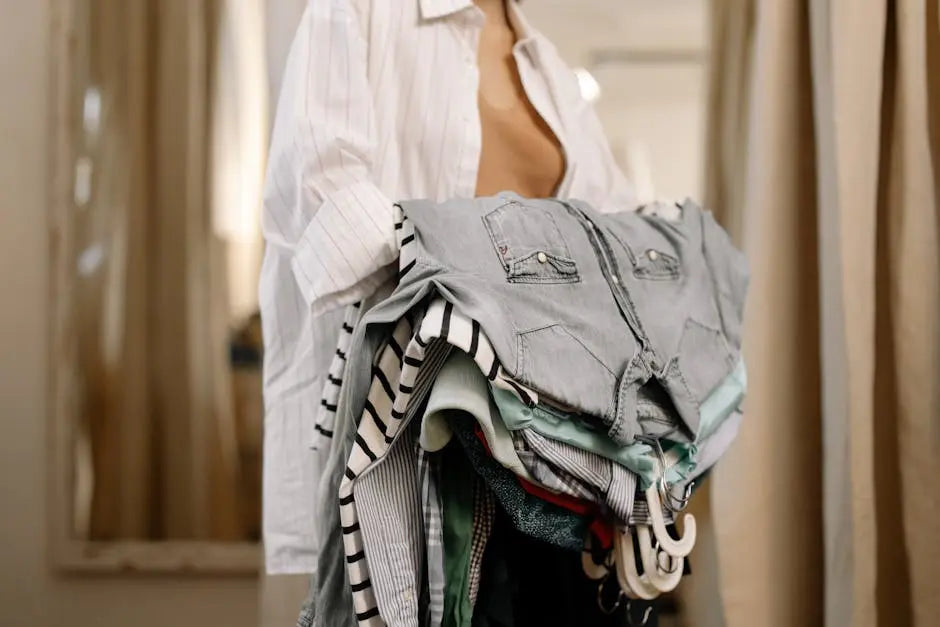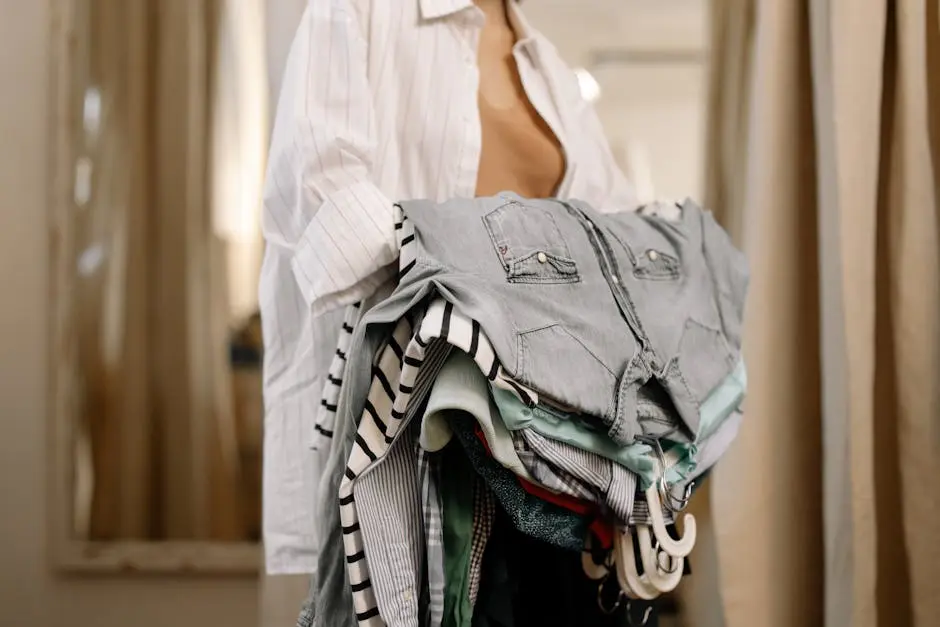
12 Practical Tips for Building a Sustainable Business Professional Wardrobe
Share
Creating a sustainable business professional wardrobe not only enhances your personal style but also positively impacts the environment. In this article, we’ll explore practical tips that will help you build a wardrobe that is both stylish and eco-friendly. Let’s dive into how you can make thoughtful choices when it comes to your professional clothing.
1. Evaluate Your Current Wardrobe
Start by taking a good look at what you already own. Identify pieces that still fit and are in good condition. This can help you understand what you truly need, avoiding unnecessary purchases.
It’s essential to declutter with a purpose. As you sift through your items, consider not just what you wear, but how each piece aligns with your professional goals and lifestyle. If something hasn’t been worn in over a year, it may be time to let it go.
Additionally, try to categorize your clothing by occasions. This will help you realize if you have too much of one type and not enough of another, guiding you toward more strategic purchases in the future.
2. Invest in Timeless Basics
Focus on acquiring classic, versatile pieces that never go out of style. Items like a well-fitted blazer, tailored trousers, and quality dress shirts can be mixed and matched for various looks.
When you think about timelessness, consider the longevity and adaptability of each piece. A simple black dress can be dressed up with heels for a meeting or dressed down with a cardigan for a casual Friday. This flexibility is key in building a sustainable wardrobe.
3. Choose Quality Over Quantity
Instead of buying many low-quality items, opt for fewer high-quality pieces. They last longer and often look better, saving you money in the long run.
Investing in well-made clothing typically means choosing garments crafted from higher-quality materials that hold their shape and color over time. This shift in mindset means looking less at price tags and more at durability.
4. Opt for Sustainable Fabrics
Look for clothing made from organic, recycled, or sustainable materials. Fabrics like Tencel, organic cotton, or linen are great choices that are both eco-friendly and stylish.
In addition, familiarize yourself with fabric certifications that indicate sustainability, such as GOTS for organic textiles or OEKO-TEX, which ensures no harmful substances were used in production. Purchasing clothing made from these materials not only benefits the environment but can also provide greater comfort and performance.
5. Consider Second-hand Options
Thrift stores and online resale platforms offer a treasure trove of gently used professional clothing. This not only saves you money but also promotes a circular economy.
Embracing second-hand shopping can be an exciting adventure! You might find unique pieces that no one else has and that can add character to your outfits. Plus, by opting for pre-loved items, you contribute to reducing waste in the fashion industry.
6. Select Versatile Colors
Choose a color palette that allows for easy mixing and matching. Neutral colors like black, navy, and gray make it easier to create multiple outfits from fewer pieces.
Incorporating a few accent colors can also add dimension to your wardrobe without overwhelming it. Think of rich jewel tones or pastel shades that can be paired with your basics, providing a polished, professional look that feels fresh and vibrant.
7. Prioritize Ethical Brands
Research brands that prioritize ethical production practices and transparency in their sourcing. Supporting these companies promotes sustainability and ethical labor practices.
Some brands even go the extra mile by using eco-friendly packaging or pledging a portion of their profits to environmental causes. By purchasing from such companies, you make a statement that you care about the origins of your clothing, which ultimately supports a more sustainable fashion industry.
8. Utilize Accessories Wisely
Accessories can transform a basic outfit into something exceptional. Invest in a few quality accessories that can elevate your look without requiring a complete wardrobe overhaul.
Scarves, ties, and statement jewelry can all be used to showcase your personality while keeping your main wardrobe minimal. This not only enhances your overall appearance but also allows you to express your individual style in a professional setting.
9. Learn Basic Garment Care
Proper care extends the life of your clothing. Learn how to wash, dry, and store your garments to keep them looking fresh and new for longer.
By following the care labels and understanding fabric maintenance, you can avoid premature wear or damage. Simple practices like washing clothes in cold water and air drying can drastically reduce the wear and tear, allowing you to keep your sustainable wardrobe intact for years to come.
10. Plan Your Purchases
Before making any new purchases, plan out your wardrobe needs. This ensures you buy only what you need and helps avoid impulse buys.
Taking time to reflect on what you truly require saves both money and resources. Creating a visual wardrobe plan or a wish list can guide your buying decisions, making sure that each piece you add is actually beneficial to your overall look.
11. Consider Custom or Tailored Clothing
Investing in custom or tailored pieces ensures a perfect fit, potentially reducing the need for alterations and leading to longer-lasting garments.
A well-fitted outfit not only looks polished but can also enhance your confidence. When you know that your clothes fit just right, you are more likely to feel good in them, which is invaluable in the professional world.
12. Embrace Minimalism
Adopting a minimalist approach can simplify your wardrobe. By focusing on a few quality items, you can elevate your style without clutter.
Consider how much easier it is to choose an outfit when you have thoughtfully curated choices. Minimalism isn’t just about less; it’s about making intentional decisions that align with your values while still looking great.


